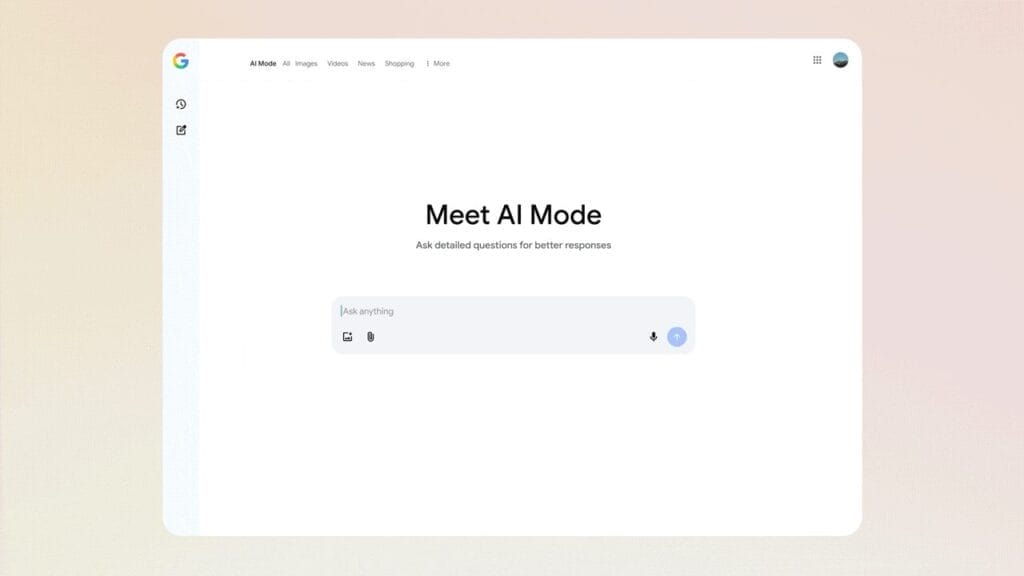Google’s latest AI update aims to provide people with more ways to explore information online, introducing significant visual enhancements to Google AI Mode with its rollout. By blending visuals, conversation, and context, the search giant is providing users with more options on both mobile and desktop devices.
Instead of relying only on typed queries, users can now explore the web with richer visual prompts and conversational follow-ups. This AI visual search capability aims to make finding inspiration, products, and ideas faster and more intuitive.

What’s New in Google AI Mode
At its core, Google AI Mode is designed to comprehend natural language, visuals, and intent simultaneously. The latest update expands this experience with advanced image recognition and conversational refinement. You can show Google what you want, not just tell it.
Upload a photo, describe what you’re looking for, and the system will attempt to generate a visually rich, shoppable, and context-aware set of results. This feature goes beyond standard Google Lens functionality, creating a more intelligent bridge between images and ideas.

AI Visual Search Meets Online Shopping
One of the most practical outcomes of this AI Update is how visual search connects directly to eCommerce. You can describe what you want in natural language, like “dark wash jeans that aren’t too wide” or “modern kitchen pendant lighting,” and Google AI Mode delivers accurate, in-stock options.
The system draws from the Shopping Graph, which comprises billions of listings that are updated hourly. Users can see current availability, prices, color options, and reviews all within the AI-powered search experience.
For marketers and retailers, this makes visual presentation and structured product data more critical than ever. High-quality images, relevant descriptions, and real-time inventory updates will directly impact visibility within AI-powered visual search.
How the AI Update Works Behind the Scenes
This AI update also uses Gemini 2.5’s multimodal capabilities to enhance both language and image understanding. When a user uploads or references a photo, Google AI Mode analyzes it across multiple layers, identifying primary objects, surrounding details, and contextual clues to interpret the intent.
It then runs multiple queries simultaneously to generate a broader understanding of what the user wants. The results are more visually aligned and semantically accurate, connecting related topics, styles, or themes that might fit the same search intent.
What This Means for Businesses and Marketers
This evolution in AI-driven visual search means SEO and content strategies must expand beyond traditional text-based keywords. Visuals now play a crucial role in how people search, discover, and make purchases.
Businesses can prepare by:
- Ensuring product images are clear, detailed, and well-lit
- Using alt text and structured data that describe both the product and its use
- Adding conversational phrasing to metadata and content
- Testing how listings appear across visual and voice-driven queries
The more Google understands your visuals and context, the better your brand will perform within AI Mode results.
A Step Toward a More Natural Search Experience?
Google is marketing this update as another attempt to shift toward “natural and intuitive search experiences.” The goal is to make it easier for users to access the information they need, as people often struggle to describe what they want in precise keywords. With Google AI Mode, visuals, conversation, and real-time data will work together to help users find what they’re looking for.
For digital marketers, it serves as a reminder to stay curious and adaptable. As AI-driven discovery becomes more visual and conversational, staying visible will mean blending technical SEO with strong creative presentation.
